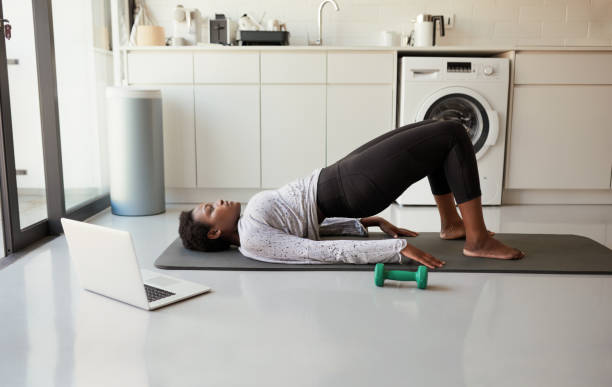
Being physically active is a key part of maintaining total wellness but people with multiple sclerosis (MS) may have a harder time with this. That’s because the illness is characterized by fatigue, muscle weakness, and issues with balance. However, if you approach your exercise routine with the right information, you’ll be able to safely get the benefits you need.
Why It Helps To Exercise With Multiple Sclerosis
Apart from keeping you healthy overall, being physically active has been shown to ease some of the symptoms of multiple sclerosis. Exercising can increase your strength and balance while improving bowel and bladder control. You will also see a decrease in the muscle tightness that comes from the prolonged muscle contraction that is associated with MS. Even better, recent studies show that exercise may decrease the likelihood of relapses and slow the progression of the disease.
How To Exercise Safely With The Illness
Exercising with multiple sclerosis is an individual experience so you will always need to modify exercise routines to suit your needs and capabilities. Your first safety precaution against hurting yourself while exercising is consulting with your doctor. They’ll be able to advise you about your likely limitations as well as the signs that you’ve done too much. It also helps to work with a physical trainer who’s familiar with multiple sclerosis.
When you’re exercising, don’t overdo it. The popular saying ‘No pain, no gain’ doesn’t apply to you. According to health experts, it’s better to take things slowly. If your planned exercise routine is rigorous, make sure to warm up and cool down so you don’t strain yourself. While working out, make the effort to keep cool and hydrated. Sometimes, you might feel numb, get a tingling sensation, or have blurred vision as you work out. That usually means you need to cool down.
If you start to feel dizzy, nauseated, off-balance, or you’re in pain, stop exercising. Those are definite signs that you’ve reached your limit and need to rest. While it’s good to have a schedule so you can stay active, there’s nothing wrong with taking a break. Too much exercise can cause a flare-up in your MS and if you’re already having a relapse, never push yourself.
Best Exercise Options For You
This is far from an exhaustive list but if you’re wondering where to start, these are a few exercises that are recommended for people who have multiple sclerosis. As a guide, bear in mind that you’ll reap the most benefits from your routine by working out for 30 minutes at least three days per week.
1. Water aerobics

Working out in the water is a great way to get some cardio exercise and tone your muscles without putting too much strain on your joints.
2. Wall squats

These exercises offer support while also helping you to build strength in your legs. Strength training is important to any MS exercise routine.
3. Plank exercises

The good thing about plank exercises is that you can do different modifications depending on how you’re feeling. Regardless of which one you choose, you’ll be strengthening your core muscles.
4. Russian twists

Russian twists are another good exercise for strengthening your core muscles. Since this one is carried out in a seated position, it works well for those who are not up doing Planks.
5. Bridge pose

If you’ve done this pose before then it wouldn’t be surprising to hear that it’s considered to be a multi-muscle exercise. It works on the legs, glutes, lower back, and abdominal muscles.
6. Wall push-ups

These exercises work on the upper body and build strength in your triceps, pectorals, and deltoids. As an added bonus, you can do them while standing or seated.
7. Overhead presses

Another upper body exercise, doing overhead presses not only strengthens those muscles but can also make it easier for you to reach up and extend your hands.
8. Walking or marching in place

When you walk or march in place, it challenges your body to maintain its balance while you move from side to side. Doing this can make a great difference in improving your overall balance.
9. Lunges

Doing lunges will not only strengthen your lower body but also play an integral role in helping you to maintain your balance. Depending on where you are with your fitness, it might take a while to master them but it will be worth it.
It might not be easy to live with the symptoms of multiple sclerosis but research shows that exercising can help. While you’re planning on trying a new routine, make sure to talk with your doctor, take care of yourself, and take things slowly.








